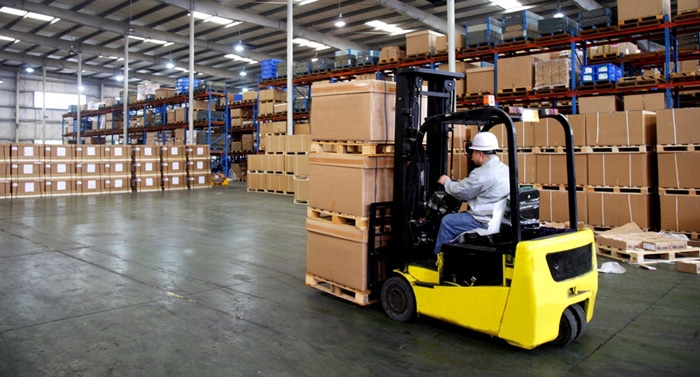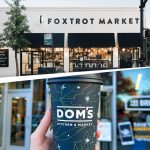DTC Sales: Now, Every Day is Cyber Monday

As more people are staying indoors due to COVID-19, they’re also ordering more food and beverage products online. A lot more.
Typically, food and beverage represents only around 3.2% of total U.S. online sales. But through a combination of factors, the outbreak of the novel coronavirus, COVID-19, has accelerated the shift to web-based shopping. While Amazon seeks to add manpower to meet unprecedented demand, brick-and-mortar retail giants like Walmart and Target are also optimizing operations for pickup and same-day delivery as consumers seek to avoid physical contact for the foreseeable future. But more than simply restocking pantry essentials, consumers are broadening the scope of items they are buying online, opening the opportunity for innovative platforms and services to expand their customer base.
Operating out of a pair of warehouses in Reno, Nevada and Youngstown, Ohio, Perishable Shipping Solutions (PSS) provides pick-and-pack order fulfillment for e-commerce, with a focus on frozen and refrigerated products, as well as chocolate. The company can ship product direct-to-consumer, and has a service where it sends temperature-controlled samples to retail buyers, but it has found a growing market niche by offering direct fulfillment for smaller accounts that require more flexibility.
“Instead of sending pallets via KeHe or UNFI to a distribution center for Target or Whole Foods, we are sending cases to a restaurant, to a crossfit gym, to a boutique grocery store, to a nursing home,” said CEO Mark Nelson of the PSS’ normal operations. “There are a whole host of smaller players that may not have the reach or the power to buy from a KeHe because they can’t meet the minimums, or maybe they don’t have the storage space for a large order.”
For an e-commerce-based business like PSS — whose clients include Better Booch, TeaRIOT, Kiito, Unreal and Core Bar, among others — Nelson said, the week of Cyber Monday and the week prior to Christmas are typically the busiest times of the year. About two weeks ago, the company began to see unusually high sales volumes; “now, every day is that day.”
Sales across every category they distribute are up 50%, from healthy products to decadent desserts.
“Ecommerce is a learned behavior,” said Nelson. “Today, in food and beverage we are ten years behind where shoes and clothes were before. We know that e-commerce buying is growing and food is just the next thing. We think the peak commerce volume is going to remain throughout this crisis.”
For liquor stores, still operating as essential businesses in many locked-down areas during the crisis, there’s also opportunity. Services including Minibar Delivery (131%) and Drizly (300%) have each seen a significant jump in activity, with about 41% of sales for the latter platform coming from new users, according to CNBC.
Consumers in states with legalized recreational marijuana are also taking advantage of other beverage and food delivery options. For the month of March, California-based Cann, which produces a low-dose THC-infused beverage, has already exceeded its total combined order volumes for January and February, with sales traffic on the cannabis delivery app Eaze doubling for the last two consecutive weeks, according to the company. The delivery service said it has seen more than double the volume of first-time orders compared to the same time last year.
“We are actively working with Eaze and our other partners to make sure the product stays in stock and that we are exploring all creative options available to keep the supply chain moving,” said Cann co-founder Jake Bullock.
With sampling efforts sidelined for the moment, the company has reoriented its focus to production and fast turnaround to ensure that new customers have a good first experience. “The easier we can make this process for our customers,” he added, “the more likely they are to continue to stock their fridges with our cannabis-infused social tonics.”
Though volumes are surging for now, the question of how long the public health crisis lasts — and what “normal” looks like when it does — still looms unanswered. Over the past two weeks, TK said PSS has increased its warehouse labor force by 25% to handle the increased demand, though many of those positions are temporary, a product of the business’s natural cyclicality. Unlike shipping shelf-stable items, frozen and refrigerated items require distributors to manage additional supply chains for packaging materials, such as dry ice and coolers. With the economy tilting towards recession, there’s also the potential that consumer spending in premium categories drops as the financial outlook dims.
“There’s no doubt that buying perishable food is expensive,” said Nelson. “In e-commerce, scale matters. It’s very difficult for a new brand to start up and try to do perishable e-commerce on their own. But once they get enough volume, they can jump into a fulfillment center like ours and prices drop dramatically.”
Yet according to Bourcard Nesin, beverage analyst at Rabobank, the long-term implications of the coronavirus outbreak will outweigh the short-term shifts in consumer behavior. For many people, he noted, buying food and beverages online didn’t fit into their lives before the crisis and won’t after it’s over.
Despite hiring thousands of new workers, online retailer leaders like Amazon and Instacart are dealing with a new set of labor challenges, with as many as 150,000 contractors for the latter planning to strike today demanding better safety protocols and higher pay. In addition, in depleted grocery stores specifically, out-of-stock products and long waits for delivery are, according to Nesin, “making the first user experience far from what you would expect, especially if you’ve ever bought anything on Amazon.”
“I would expect that a smaller number than what some would have hoped will continue using online service immediately after things return to normal,” he said. “Because of user experience, overwhelmed infrastructure and supply chains, and last-mile delivery, there will be some challenges. There will be some dramatic impacts that will not only lead to e-commerce sales but also change the slope of the curve for e-commerce adoption.”
Nesin added: “I wouldn’t expect a meaningful shift in the kinds of platforms that people use after COVID-19 because the problems that the platforms and e-commerce providers solve are going to be the same ones that existed before the crisis.”
Regardless of whether they dramatically shift their approach or not, simply getting more consumers, retailers, distributors and brands to at least dip their toes in the e-commerce waters is important in itself.
“I was talking to the head of e-commerce for a major CPG company and they were saying, ‘If I ever lose my job here, I should go into not-for-profit fundraising, because for the last two years, I’ve been going around begging for resources, rattling a tin cup’,” he said. “‘But now, since this COVID-19 hit, I’m the belle of the ball.’ I think that’s really going to be the most profound impact in terms of e-commerce for this industry. The attention that is being brought to that channel will correspond with an investment in that channel across the value chain.”
For businesses like PSS, that increase in attention may be more than enough. Post-crisis, the impetus for emerging food and beverage brands to diversify their revenue streams with an omnichannel approach should remain high, with plenty of room for incremental growth. According to EMarketer, online retail sales are expected to increase 12.8% this year.
“We think of our business as a fulfillment center for e-commerce,” said Nelson. “We are not the gold rush guys — we are Levi Strauss selling picks and shovels and jeans.”














